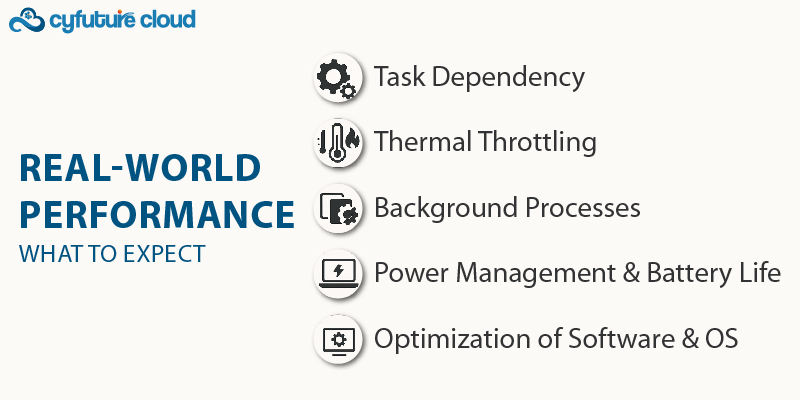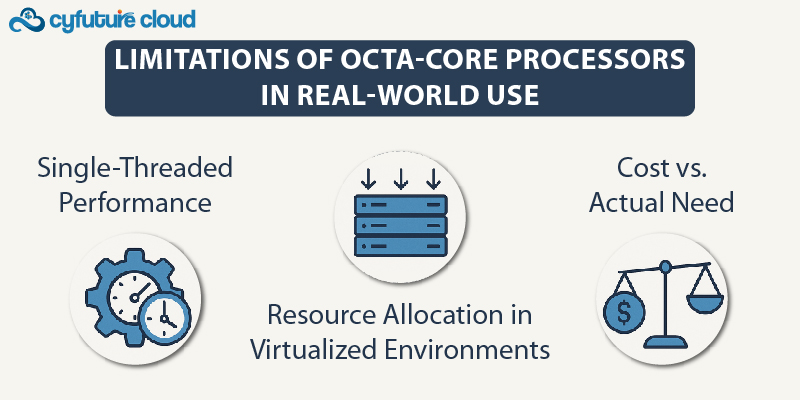 Server
Colocation
Server
Colocation
 CDN
Network
CDN
Network
 Linux Cloud
Hosting
Linux Cloud
Hosting
 VMware Public
Cloud
VMware Public
Cloud
 Multi-Cloud
Hosting
Multi-Cloud
Hosting
 Cloud
Server Hosting
Cloud
Server Hosting
 Kubernetes
Kubernetes
 API Gateway
API Gateway

The advent of octa-core processors has significantly raised the bar in computing power, enabling faster and more efficient performance across various devices, from smartphones to laptops and even servers. According to a report from Statista in 2023, over 60% of high-end smartphones now feature octa-core processors, offering a seamless user experience for everything from multitasking to gaming. But as with any technology, numbers on paper don’t always align with real-world performance.
Many people wonder how well these powerful processors translate to actual use. Whether you’re hosting a cloud-based application, running resource-heavy tasks on your personal server, or simply browsing on a device with an octa-core chip, it’s important to understand how these processors perform in real-world conditions. In this guide, we’ll dive into what you can realistically expect from an octa-core processor, addressing factors that influence its performance.
An octa-core processor refers to a CPU that contains eight cores, essentially making it a powerhouse when it comes to processing multiple tasks simultaneously. The architecture is designed to distribute workloads more efficiently, allowing users to run multiple applications without experiencing slowdowns.
However, when it comes to real-world performance, the benefits of having eight cores might not always be immediately visible. It’s important to recognize that the true value of an octa-core processor depends on how well your system utilizes those cores, and this often varies based on the tasks you're running.
An octa core processor is generally very good, especially for users who multitask, game, edit videos, create content, stream, or run heavy apps, since its 8 cores can handle multiple tasks efficiently and deliver smooth performance. However, its advantage depends on the chip generation, clock speed, and efficiency design a modern 6-core CPU can still outperform an older 8-core model. For basic tasks like browsing, office work, and watching videos, an octa core isn’t necessary, but for performance-focused users and future-proofing, it offers strong value and power.
When an Octa-Core Processor Is Good
You’ll benefit from an octa-core CPU if you:
|
Use-Case |
Benefit |
|
Multitasking (multiple apps) |
Smooth performance |
|
Gaming |
Better FPS & stability in modern games |
|
Video editing / content creation |
Faster rendering |
|
Programming & development |
Better compile speeds |
|
AI / ML workloads |
Parallel processing advantages |
|
Productivity tasks |
Comfortable multitasking |
For very basic usage, such as:
◾ Browsing
◾ Social media
◾ Online classes
◾ Watching videos
◾ Office work (Word, Excel, Zoom)
Even a quad-core or hexa-core is sufficient. Octa-core may not make a noticeable difference here — it's more about budget vs need.
More cores do not always mean faster performance.
Performance also depends on:
◾ CPU generation (newer models are much faster)
◾ Clock speed (GHz)
◾ Architecture (Ryzen/Intel generation, ARM version)
◾ Cooling & power delivery
◾ GPU + RAM combination
◾ Software optimization
Example:
A modern 6-core CPU can beat an old 8-core CPU because of better architecture.

While octa-core processors promise outstanding performance, real-world scenarios don’t always align with theoretical maximums. Several factors play a role in determining how well your processor performs in practical situations:
Task Dependency
The real performance boost of an octa core processor is most noticeable in multi-threaded applications. Tasks like video rendering, large-scale simulations, and multi-tasking benefit from having multiple cores. However, if you're using simple applications like word processing or basic browsing, the extra cores might not be fully utilized. The processor might be underutilized, resulting in lower performance gains.
Thermal Throttling
Overheating can limit the potential of your octa-core processor. When the processor gets too hot, it reduces its speed to prevent damage, a process called thermal throttling. This is particularly important for laptops and mobile devices. In high-performance environments, like server hosting or cloud-based applications, efficient cooling systems are essential to prevent throttling and ensure that the processor can maintain optimal speeds.
Background Processes
Especially in a server or hosting environment, background processes running on a device or server can impact the real-world performance of your octa-core processor. For example, servers hosting numerous virtual machines (VMs) or cloud applications can face performance dips if resources are not allocated efficiently across workloads.
Power Management and Battery Life
In laptops or mobile devices, power management settings often influence processor performance. These devices typically throttle the CPU speed to save battery life when running on power-saving modes. On the other hand, desktops and servers, especially those using cloud hosting, often run on higher-performance settings that can keep processors at higher speeds for longer periods.
Optimization of Software and OS
The effectiveness of an octa core processor also depends on how well the operating system and applications are optimized to use multiple cores. In server environments, the operating system (OS) and server applications play a crucial role in utilizing the full potential of all cores. In cloud hosting, resource allocation through virtualization and the configuration of cloud-based services can impact the processor’s real-world performance.
In high-demand environments like servers and cloud hosting, octa-core processors play a more significant role. For instance, cloud providers use octa-core processors in virtual machines to handle heavy workloads, manage large databases, or run applications for multiple users simultaneously. The cloud infrastructure’s ability to dynamically allocate resources ensures that octa-core processors can perform at their best under load.
However, the reality is that in cloud hosting, virtual machines (VMs) often share the host’s CPU cores with other VMs. This means that while you might be paying for the use of an octa-core processor, your actual available performance could vary depending on the load placed on the host server by other tenants.
Similarly, server hosting benefits from having an octa-core processor, as it can handle multiple tasks at once, from handling website traffic to managing databases. Still, the processor’s real-world performance can vary based on server configuration, cooling, and the type of applications being run.

Despite their impressive specifications, there are certain limitations to what an octa-core processor can do:
Single-Threaded Performance
Some applications, particularly older software or games, may not be optimized to use multiple cores. These applications rely more on single-core performance, which can cause an octa-core processor to fall short when compared to a high-clock-speed quad-core CPU.
Resource Allocation in Virtualized Environments
As mentioned earlier, virtual environments such as cloud hosting and server setups can sometimes lead to resource contention, where processor time is shared between multiple virtual machines or containers. In such cases, the octa-core processor might not deliver the expected performance if not managed properly.
Cost vs. Actual Need
While octa-core processors are great for power users and businesses with heavy computing demands, not everyone needs this level of performance. For simpler tasks, like web browsing or word processing, an octa-core processor may be overkill. Therefore, it’s essential to evaluate your real-world needs before investing in systems with octa-core processors.
Octa core processors are undoubtedly powerful and offer impressive multitasking capabilities, making them an ideal choice for high-performance devices, servers, and cloud hosting environments. However, real-world performance may not always match up to the theoretical numbers. The performance you experience depends on factors such as thermal management, software optimization, task type, and resource allocation—particularly in environments like cloud hosting or server hosting.
For most consumers, the octa core processor’s real-world performance is more than adequate for multitasking, gaming, and demanding applications. However, for businesses or tech-savvy users managing complex workloads, it's crucial to ensure that resources are efficiently allocated, especially when using server or cloud environments.
Ultimately, understanding your specific needs—whether for personal use or enterprise-level hosting—will help you determine how much processor power is actually necessary to get the best out of your octa core chip.

Let’s talk about the future, and make it happen!
By continuing to use and navigate this website, you are agreeing to the use of cookies.
Find out more


